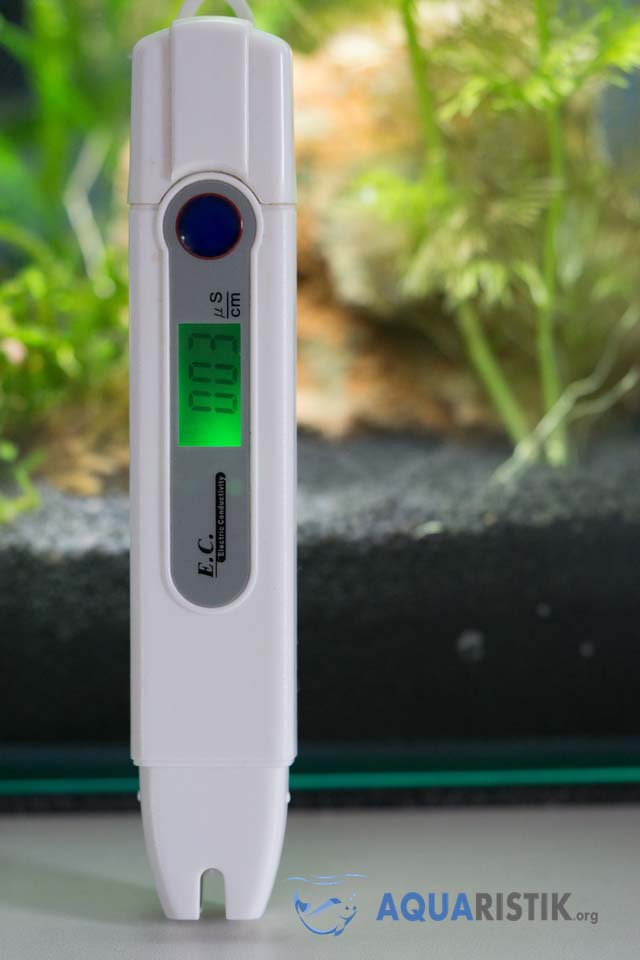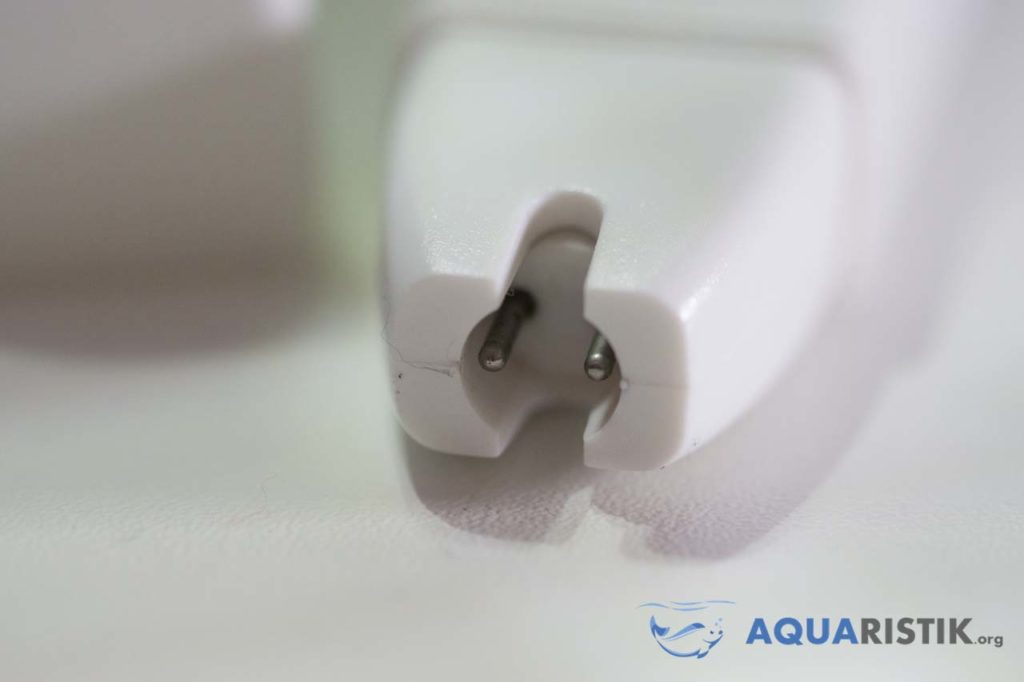Conductivity in the aquarium: What does the measurement of the conductance in the aquarium? What does the guide value say anyway? What kind of guiding value do ornamental fish need anyway? This question keeps popping up in connection with that conductance on. But what is behind it and what is the meaning of the guiding value and the conductivity in the Aquaristics. Most of the time you only hear about the conductance. Basically, it's about the conductivity and in our case that of the water. Before we get into the measurement and importance in the aquarium, we need to get some basics down first. Of course, one could hold a highly scientific and chemical lecture here, but that is not the point of the article here, rather we only want to convey the basics for the beginner. Also, we are not chemists.

What is conductance or conductivity?
Objects conduct electricity differently. For example, copper is a very good conductor and fabric is a poor conductor. This describes the transmission of electricity through a substance. The water also has a corresponding conductivity. Since water is charged by ions, the conductivity can also be determined here. However, this is not always the same, because ultimately the salt content of the water plays a role here. Only the ions of the salts in the water allow the current to conduct. Different salts also have different ions, which in turn affects conductivity.
But not only salts influence the conductivity in the water. More on that below.
As far as the delimitation of the values is concerned, you should also know that the conductance basically means the electrical resistance and its reciprocal value. Conductivity is the reciprocal of the resistivity of the component. Both values come from the field of electronics, which can also be read quite well on the unit.
Everything is measured in units microsiemens in µS/cm. As the name suggests, the unit was designed after Werner from Siemens named. As is well known, he is the founder of Siemens AG.
Incidentally, a conductivity is also measured in seawater. There, however, you go into a different unit, because millisiemens per cm are mentioned there. There are of course much more dissolved salts in the water here.
Which substances and compounds influence the conductance in the water?
Not only salts are responsible for the conductivity, but also other substances which can be dissolved in the water. These include, for example Potassium content, nitrate and nitrite in the water, calcium, magnesium, sodium or chlorine.
How can you measure and determine conductivity and conductance?
Usually you can do this with a small Handheld device measure. Also see the pictures. These devices have two electrodes at the bottom which are inserted into the water. The distance and also the size is precisely defined. Alternating current is then applied to the electrodes. Now you can measure a resistance between the two electrodes. This then indicates the conductivity. Basically a very simple principle.
Modern aquarium computers measure the conductance constantly and also output this in an evaluation. Therefore, alarms can also be generated if this leaves a certain area.
[the_ad id = “1019 ″]
Conductance and hardness of the water?
Again and again, the conductance is also mentioned in connection with the hardness of the water (GH). A calculation from the hardness is also possible. If you take every degree of German hardness and multiply this by 33, you get the approximate conductance. Basically, this serves as a good guide. However, you will find water that has a conductivity of 300 but only has a hardness of 5. Therefore, one must not consider this as the sole factor. Many other factors in the water such as nitrite, nitrate, phosphate, Co2, PH value or carbonate hardness also play a role.
Which conductance and which conductivity do ornamental fish need?
This is not easy to answer, because in addition to conductivity and conductance, other factors also play a role. Basically, the other conditions have to be right first and then you can take a closer look at the conductance. Nevertheless, there are aquarists who swear by the conductivity and also take this as the sole measured value. You should definitely not do this.
There are also tables to be found that give an approximate guide value for ornamental fish. However, it must be mentioned that the animals can also be kept outside of these areas. Nevertheless, the animals seem to feel better in an optimal conductance value (if there is one at all), to be more colorful and also to be less affected by diseases.
Let's take some examples which we have from a table from Fluval. You can find them here: http://www.fluval-g.com/pdf/German_Fish_Conductivity_Chart.pdf
Discus, blue neon tetra, dwarf rasbora, angelfish, redhead tetra, ornamental tetra or five-girdle barb and chocolate gourami should be kept at 20-50 S/cm.
Red neon, clown loaches, armored catfish, gourami, harlequin rasbora, red-headed tetra, sumatran barb should be kept at 50 – 100 µS/cm.
Paradise fish, black tetra, dwarf cichlid, armored catfish depending on the species such as metal armored catfish, sucking loaches, angelfish, mullet, zebrafish and glass catfish should be kept at 100 - 200 µS/cm.
Platy, Molly, Swordtail, Rainbowfish, Zebra Cichlid, Glassfish and Cardinalfish should be maintained at 200-500 µS/cm
Goldfish, sailfin, carp, argus, catfish and green puffer should be maintained at > 500 S/cm.
[the_ad id = “1019 ″]These are just a few examples of how the conductance can affect the respective ornamental fish. As you can see, the requirements here are very different.
When does it make sense to measure the conductance?
Of course, one now asks oneself what the point and benefit of controlling the guide value is. There are different approaches to this.
For example, if you want to blend the starting water because you want to reduce the hardness, this is usually done with a osmosis system deployed. These systems create water through a specific process (we have already described the function of an osmosis system here), which has a very low conductivity, since the hardness is also very low. This something is then usually “salted up” again. It is then advisable to set the value accordingly with a conductance meter.
A second important point why many aquarists measure the conductance is to notice changes in the aquarium or rather in the aquarium water. If the conductance changes relatively quickly and to a greater extent, then something no longer seems right. Of course you have to measure the individual values to determine the exact cause.
And another point is discussed again and again in connection with the guiding value. Here, too, opinions differ and aquarists are divided into two camps. It's about determining the right time when a water change is needed.
So let's summarize where the measurement of the conductance can make sense (doesn't have to):
- Adjusting osmosis water
- Permanent control of the water
- Determination of the time for the water change
How can I lower the conductance?
Of course it can happen that you have too high a conductance in your aquarium. Especially if you want to keep special fish, as described above. Among other things, you can discus or else Old Angels belong. If this is the case, then the conductance should be lowered. But how does one do it.
Basically, it's about lowering the KH and GH value, which then also affects the conductivity.
Probably the best and most widespread method is to use an osmosis system (what that is and how it works can be found here). Then you quickly get water with a very low conductivity. Usually only about the value of around 20-40µS/cm. With this water you can then blend / mix your starting water. This is usually done during the water change.
How can I increase the guide value?
The opposite can also be the case, that you have to increase the conductance. Both usually occur in the same process. This may sound a bit confusing, but the example below should clear things up.
Let's do an example: The conductivity is too high and you lower it by using osmosis water. Then you get a very low conductance, which in turn can be too low. Therefore you have to "salt it up" accordingly before you put the water into the aquarium. Special preparations help you to set the conductance precisely.
Conductance measurement is quick and easy
Especially since you can measure the conductance quite quickly and this also changes quickly when salts are added, the measurement is very common, especially when hardening osmosis water. You can thus produce the optimal value for your ornamental fish and shrimp. Finally, we have added some devices for conductivity measurement.



